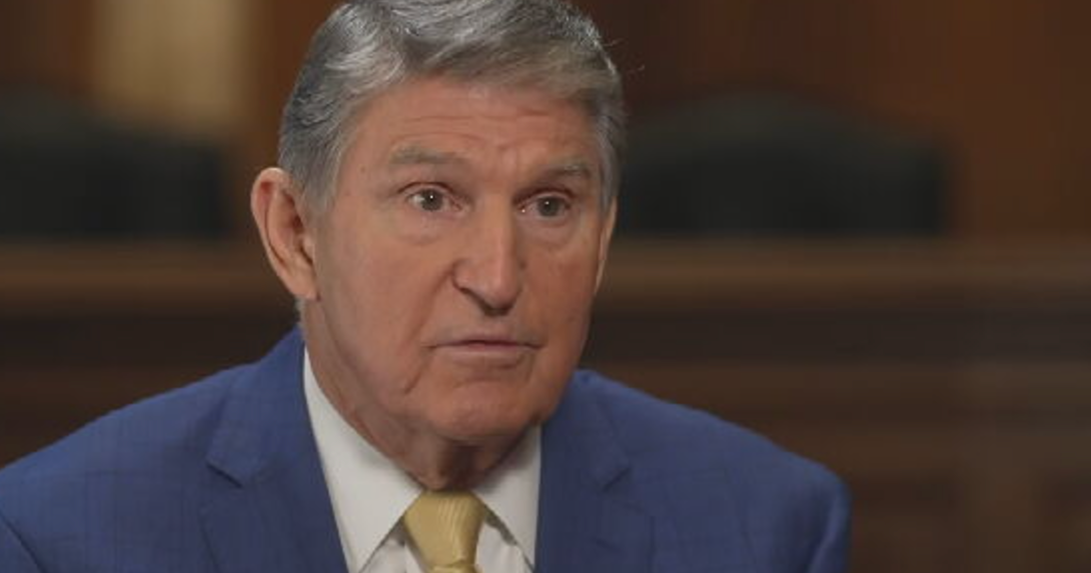Transcript: Scott Gottlieb discusses coronavirus on "Face the Nation," July 5, 2020
The following is a transcript of an interview with former FDA Commissioner Scott Gottlieb by CBS News' Margaret Brennan that aired Sunday, July 5, 2020, on "Face the Nation."
MARGARET BRENNAN: We go now to Westport, Connecticut, and former FDA commissioner Dr. Scott Gottlieb. Good morning to you.
DR. SCOTT GOTTLIEB: Good morning.
MARGARET BRENNAN: The infection rate spiked this week. Dr. Fauci referred to it as beyond the worst spikes that we have seen. Where are we headed as a country right now?
DR. GOTTLIEB: Well, I think right now we're where we were when New York City was having its peak epidemic. If you look back, when New York City peaked we had about 34,000 cases a day. At the time, we were probably diagnosing one in 20 infections. So that meant we were having 700,000 new infections a day. Right now, we're gonna have about 60,000 infections a day. This week, maybe we'll reach 75,000 or get close to it. We're probably diagnosing one in 12 infections. CDC said one in 10 a few weeks ago. It's probably one in 12 now because we're falling behind. That means we have about 700,000 infections a day nationally. So we're right back where we were at the peak of the epidemic during the New York outbreak. The difference now is that we really had one epicenter of- of spread when New York was going through its hardship, now we really have four major epicenters of spread: Los Angeles, cities in Texas, cities in Florida, and Arizona. And Florida looks to be in the worst shape. And Georgia is heating up as well, and that's concerning.
MARGARET BRENNAN: The president has tweeted yesterday that the media is focused too much on these growing number of cases, and he is making the point that deaths and the all important mortality rate is going down, and we're not hearing enough about that. How do you understand what is happening with deaths and mortality?
DR. GOTTLIEB: Well, we need to separate the number of deaths going down from the actual case fatality rate, how lethal is this? The case fatality rate is going down, although we're not able to measure it right now because we're able to save more people who are hospitalized and get critically ill because of advances in care. The number of deaths has gone down because the number of infections went down for a period of time. And more of the new infections right now are in younger people. And we're protecting more vulnerable populations like people in nursing homes. But the total number of deaths is going to start going up again as the number of hospitalizations starts to spike again. So we're going to see deaths creep up. And I wouldn't be surprised in the next two weeks to see deaths go over a thousand. That doesn't mean the case fatality rate, the actual death rate isn't declining. But when you have more infections, even if the death rate is declining, you're going to get more deaths tragically. So if we cut the death rate in half, if we make this half less lethal than it was, but we double the number of infections, we're going to get more deaths. And I think we're going to start to see that. So we shouldn't just focus on the crude mortality rate, the number of deaths to tell the story of what's happening medically. Medically, we are improving. But we just have so much infection around this country, we're going to see, unfortunately, a lot of lethality.
MARGARET BRENNAN: So when the president said of the increase in cases that 99% of which are totally harmless, is he confused?
DR. GOTTLIEB: Well, I'm not really sure what he's referring to. He might be referring to the number of people who get hospitalized based on the number of people who get infected, which is probably less than five percent when you count all the asymptomatic infection and infection in young people that might not be- be getting diagnosed. But certainly more than 1% of people get serious illness from this. About 60% of people who get infected become symptomatic. About 10 to 15% of them will develop some form of COVID pneumonia and somewhere around two to 5% might get hospitalized, depending on what the age mix is of- of the people who are getting infected. So this is still a pretty bad virus. What we're able to do is when people do get hospitalized and get into the ICU, we're able to save more lives with treatments like remdesivir, with steroids now, which has a big impact on mortality, and innovations in care like using blood thinners on patients and not incubating them as aggressively.
MARGARET BRENNAN: Yeah.
DR. GOTTLIEB: So that is going to cut the death rate.
MARGARET BRENNAN: I want to talk to you about remdesivir and about some of those treatments. So if you can stay with us, we will come back and continue our conversation with Dr. Gottlieb in the next half hour.
(COMMERCIAL BREAK)
MARGARET BRENNAN: Welcome back to FACE THE NATION. We continue our conversation now with former FDA commissioner Dr. Scott Gottlieb. I want to pick up on this idea that we left off on, which is that treatments, there is hope on that front. Specifically on remdesivir, that drug that's made by Gilead, we've talked about it on FACE THE NATION before. It shortens recovery time. It was a sign of hope. But now we are hearing that there may not be enough of it. Does the administration need to be doing more? I know HHS said that they're purchasing 500,000 doses of it. But is that going to meet the need?
DR. GOTTLIEB: Well, look, we need to accept the fact that we're in the second wave right now. Two months ago, there were about 10 states that- where the reproduction number was above 10, meaning they had expanding epidemics. Now there's 40. So we're in that second wave. And it's not a clear line of sight on how we're going to get this under control. So it makes us more and more dependent on technology. And there's only a handful of technologies that may be available between now and the end of the year. Remdesivir is one of them. We have enough of the drug if the epidemic stays at its current level and we continue to use remdesivir as it's approved for patients who are more sick and hospitalized. But if the epidemic worsens and we want to extend use of the drug to patients who aren't as ill but have pre-existing conditions, that- that predict that they may become very sick, we don't have enough drug for that. And that's what we would have wanted. We would have had to set the groundwork for that months ago and we didn't do that. I think right now we need to be planning for other drugs that may become available this fall, like the therapeutic antibodies, and make sure we invest right now in manufacturing capacity and have a coordinated strategy on that so we can have them if those drugs do become available.
MARGARET BRENNAN: When you say we, who do you mean? Is that something needs to come from the White House? Is that something Congress has to mandate? Are we looking for corporations to decide to do this themselves?
DR. GOTTLIEB: Well, the corporations are doing it themselves. There is a lot of collaboration going on, discussion between pharmaceutical companies about trying to free up capacity to increase the manufacturing of these drugs. I think we need a more coordinated national strategy around this. There's things the government can do to either pay companies not to produce certain drugs or try to consolidate manufacturing for products we don't really need right now, or maybe boost manufacturing in the short term and freeze some of those drugs, put them on hold so you can free up the domestic manufacturing capacity. We don't have a lot of excess domestic manufacturing capacity for these drugs. So we need a strategy to try- try to free that up. And it doesn't mean the government steps in and uses the Defense Production Act to take over facilities. There's ways that they can work with companies to try to coordinate this. That's what should be happening, particularly around the antibodies. We missed the window to do it on remdesivir. Because that drug has a long manufacturing cycle, we're unlikely to build ramp up supply between now and the end of the year. And that's when we would have needed it because we face a hard fall. We're going to take all this infection into the fall and winter. It's not clear that it's going to get better. We're going to have epidemics that- that come and go across the nation in different cities. They'll light up at different times. But we're not going to really be able to crush this virus at this point because there's just so much infection around.
MARGARET BRENNAN: Yeah.
DR. GOTTLIEB: We really don't seem to have the political will to do it.
MARGARET BRENNAN: You told us in April on this program that doctors should not be using hydroxychloroquine to treat COVID-19. Do you stand by that recommendation now?
DR. GOTTLIEB: Well, that's certainly clear. There's been definitive studies that showed it doesn't provide benefit- benefit to hospitalized patients and it doesn't work as a prophylaxis, so if you take it when you're exposed, it doesn't prevent infection. There's still some studies underway looking at whether it could be helpful in mildly symptomatic patients on an outpatient basis. But most of the evidence has been turned over to answer that question isn't suggesting that there is a benefit. So I don't think anyone should be using it right now, pending results of another study that might demonstrate that there is, in fact, a benefit, because the margin of all the data we've gotten from all the credible studies really shows no benefit and, in some cases, increased risk.
MARGARET BRENNAN: Dr. Gottlieb, always good talking to you.
DR. GOTTLIEB: Thanks a lot.



